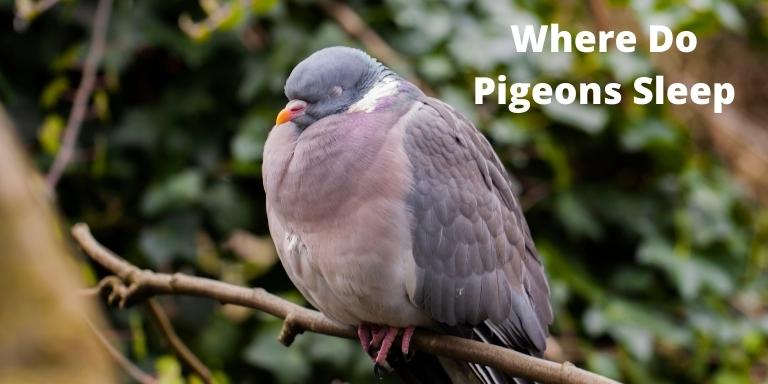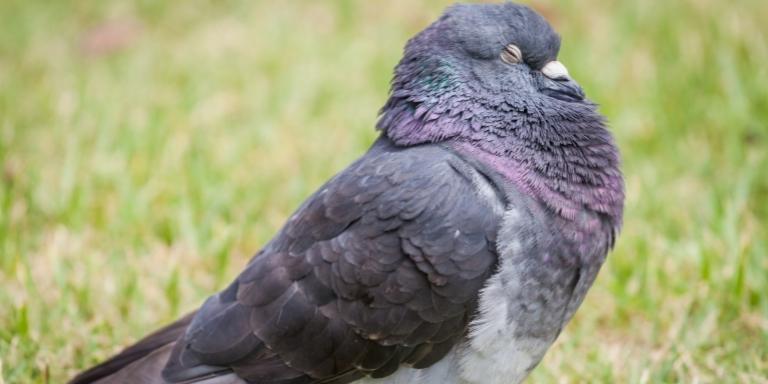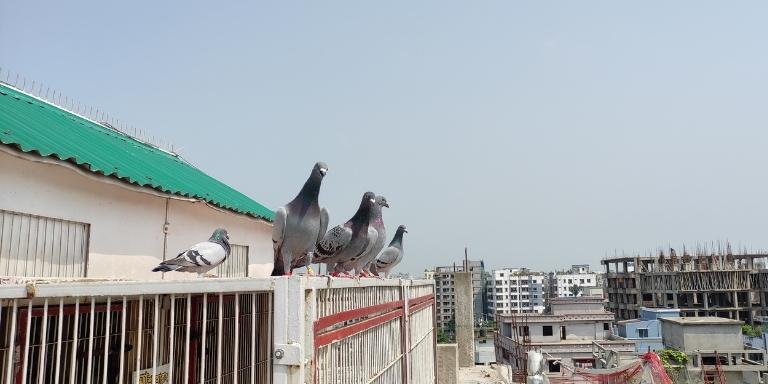We see pigeons cheerful and active during the day though rare to find after sundown. So, people are usually curious about where do pigeons sleep!
Pigeons sleep somewhere there’s a shelter. Whether it’s a building, under a bridge, or in the gaps of a hill, they choose safe shelter way above the ground for sleeping. And they rest in flocks to keep themselves warm.
To know more new information about this, stick with us till the end.

Where Do Pigeons Sleep
Pigeons fly around in parks or market squares or overhead in groups from dawn to dusk. These diurnal birds don’t retreat to their nest to take naps. They only use their nests for mating and laying eggs.
All they do is find warm and well-protected shelters for sleeping while flying around. They often find rooftops, skyscraper buildings, crevices in cliffs, or undersides of bridges. They chose the shelter during the daytime.
Often these nesting sites are high-rise structures. They prefer shelters that are high from the ground to avoid ground predators.
Also, pigeons don’t sleep in the same place every night. If only they have eggs or newborns to care for, they sleep in the same place. But after they are done with the nesting season, they leave behind those nests and start sleeping in random places.
How do Pigeons Sleep

Pigeons’ sleeping seems adorable as they put their heads on the feathers of their necks and wings. Although it looks like they twisted their heads, they can do this feat because of their flexibility. Their nails may also hold on to a perch or a branch while asleep.
One of the fascinating things is they can be aware of their surroundings while sleeping. So, if you see a pigeon moving with its head tucking in its neck, don’t get surprised. One of their survival instincts is that half of their brain remains alert while sleeping.
How Long Pigeons Sleep at Night
Pigeons keep on sleeping as long as there’s darkness. Specifically, it’s examined that they nap 10 hours straight at night. They never suffer from sleep deprivation.
After sunset, when it’s completely dark, these birds fall asleep. They might get less sleep during summertime as the sun sets late than usual. It is unlikely to see them walking around at night. If some unnecessary noise hinders their doze, you can only see them awake at night.
The Time When Pigeons Go to Sleep
Usually, pigeons nod off as the sky gets dark at nightfall. These diurnal birds spend most of their time in direct sunlight. They also have poor vision at night. So, they sleep as long as the sky is black. It has been observed that they rest longer in the winter because the days are shorter.
However, just like humans, pigeons take short naps during the day. But many factors come into play about their day sleeping. They don’t get any deep siesta as their survival instinct keeps their brain mostly alert for predators during the day.
Exciting Facts About Pigeons Sleeping

One of the fascinating things about pigeons sleeping is that they can sleep with one eye open. Their brains are capable of making it possible. The reason is that they have two cerebral hemispheres, components of the brain that are capable of shutting one side of their body while keeping the other attentive.
A separate hemisphere of the brain controls each side of the pigeons’ body. As long as one eye remains open, they’ll be able to go to sleep and wake up with one-half of their brain functioning.
In easy words, it is a state when they are half asleep. USW, or “unihemispheric slow-wave sleep,” describes this state. It’s a means of surviving. Pigeons can survive predators’ attacks with the help of this unique ability.
Another most exciting fact is that pigeons can sleep standing on one leg. The reason behind it is to decrease heat loss. Like most birds, pigeons’ legs have a “rete mirabile,” which is an adaptation that prevents heat loss.
When they stand on one leg while sleeping, one of their feet remains close to the body’s temperature. Their arteries circulate warm blood through veins to their legs. Since they keep one leg close to their body, the arteries get cold blood in return. And thus, they become able to reduce heat loss and keep themselves warm.
Conclusion
We often see pigeons energetic and active during the day. So, it’s usual to think about where pigeons sleep at night. These diurnal birds find shelter while wandering around and choose a safe, warm place for sleeping. And the most surprising thing is that they don’t use their nest to sleep.
You might also be interested in: